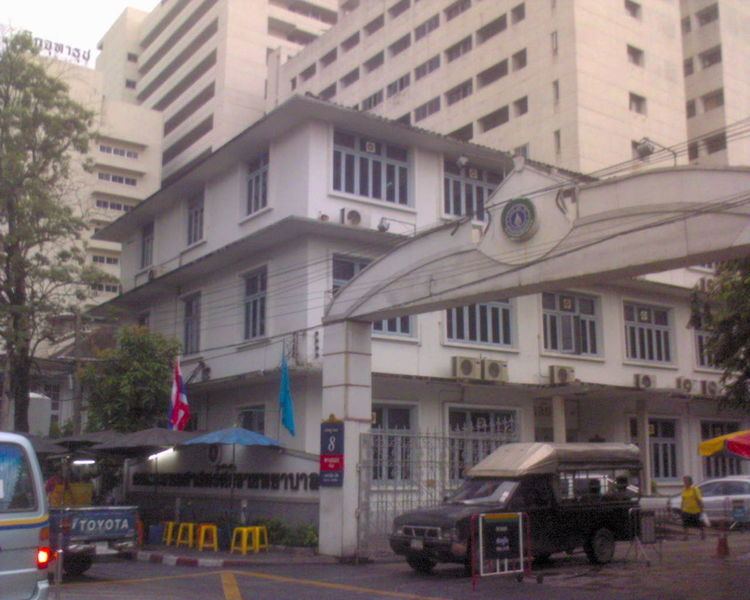Phone +66 2 419 2600 | ||
 | ||
Hours Open today · 10AM–5PMThursday10AM–5PMFriday10AM–5PMSaturday10AM–5PMSunday10AM–5PMMonday10AM–5PMTuesdayClosedWednesday10AM–5PMSuggest an edit Similar Siriraj Hospital, Bangkok National Museum, Bangkok Noi District, National Museum of Royal Bar, Vimanmek Mansion | ||
Siriraj medical museum educational entertaining and eviscerating
The Siriraj Medical Museum, nicknamed the Museum of Death, is a medical museum in Bangkok, Thailand. Siriraj Medical Museum is open to the public and is a valuable resource for medical professionals and students. This museum consists of five small medical museums: the Ellis the Pathological Museum, Congdon Anatomical Museum, Sood Sangvichien Prehistoric Museum and Laboratory, Parasitology Museum, and the Songkran Niyomsane Forensic Medicine Museum.
Contents
- Siriraj medical museum educational entertaining and eviscerating
- Siriraj medical museum tu110
- Ellis Pathological Museum
- Congdon Anatomical Museum
- Sood Sangvichien Prehistoric Museum and Laboratory
- Parasitology Museum
- Songkran Niyomsane Forensic Medicine Museum
- References
Siriraj medical museum tu110
Ellis Pathological Museum
As the very first museum to be part of Siriraj Hospital, the Ellis Pathological Museum was founded by Prof. Dr. Aller G. Ellis, M.D., an American pathologist who began the practice of collecting disease-identified specimens of patients for his pathology class. The museum showcases the top killers of Thai people, heart disease and cancer, and different types of congenital anomalies along with proper treatment and preventive measures.
Congdon Anatomical Museum
Understanding human anatomy is at the core of the study of medicine. This museum has a collection, established by Dr Edgar Davidson Congdon, of more than 2,000 organs available for anatomical education. The museum displays the anatomical structure of all the systems of the human body, ranging from conception to reproductive age. Different forms of multiple births can be found on display. The range of muscles in the human body, the smallest of which is the size of an eyelash and the biggest of which is the size of a leg can also be seen. On display is a masterful dissection of the whole-body nervous and arterial system by Dr Patai Sirikarun, the one and only exhibit of its kind in the world.
Sood Sangvichien Prehistoric Museum and Laboratory
In 1960, Dr Sood Sangvichien, a specialist in anatomy and anthropology, joined an excavating mission at the archaeological site at Chorakhe Phueak in Kanchanaburi Province. The site is considered to be one of Thailand's most significant prehistoric excavation sites. There, he had the opportunity to study the tools, appliances, ornaments, and earthenware that were buried with the skeletons. He collected these objects and they became the first exhibits at his museum, officially open to the public in 1972. The museum takes visitors back to prehistoric civilization, when pieces of a Homo erectus skeleton known as "Lampang man" were found in Thailand. "Lampang man" lived approximately 1,000,000 – 400,000 years ago, making him a contemporary of "Peking man". The exhibit includes tools from three different ages, the Paleolithic, Mesolithic and Neolithic, aged over 1,000,000 – 4,000 years, as well as beads, colourful stones and various designs of painted earthenware.
Parasitology Museum
Dr Vichitr Chaiyaporn, the founder of this museum, collected parasites from his patients. They are displayed here with a presentation of their life cycle and natural habitat. A wide variety of worms, ranging from those that are not visible to the naked eye (protozoa), to those up to a metre-long (flat worms) are on display, in addition to information about types of food, cooking processes favouring growth of the parasites, disease-carrying insects, venomous animals, and preventive measures.
Songkran Niyomsane Forensic Medicine Museum
Forensic medicine is the application of medical and scientific methodology to the identification of the causes of unnatural death. The exhibits include displays of skulls and various body parts in glass cases, many of them from murder victims, evidence that Dr Songkran Niyomsane, a forensic pathologist, collected in the course of his career.
This museum includes the mummified remains of the first known serial killer in modern Thai history, Si Ouey Sae Urng, erroneously romanized on the exhibit as "Si Quey" (sae signifies a Chinese clan name, in this case the family of Urng). Si Quey was a cannibal who preyed on children in the 1950s, first murdering them and then eating them. He was finally caught, convicted, and executed. His mummified remains were put on display as a deterrent to others.
